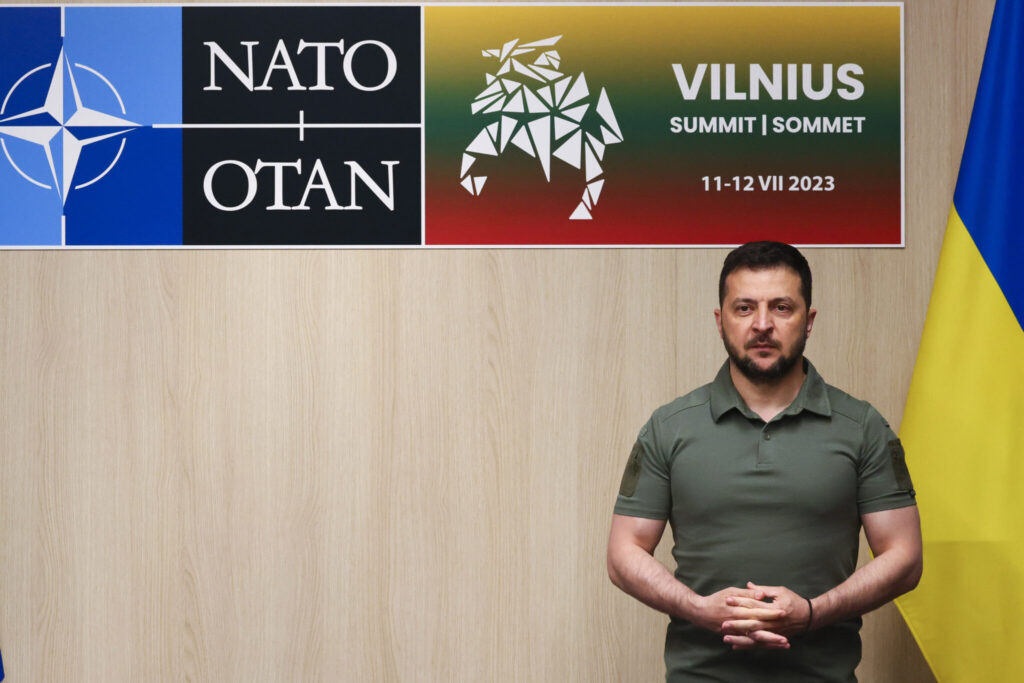NATO Borders, Will Putin Fall Into The Ukrainian Trap \ Newslooks \ Opinion \. Has NATO pushed too far? Certainly, there are numerous questions surrounding NATO’s actions in Ukraine, largely based on the assumption that Putin will not respond on a grand scale, potentially even nuclear.
However, there is also a realistic chance of escalation to which the Russian leader might respond, surpassing previous thresholds. Eventually, Putin’s tolerance might reach its limit, urging him to react to NATO’s recent tactics and Ukrainian President Zelensky’s decisions.
Recent missile attacks on Crimea have caught the media’s attention for various reasons, primarily because they represent an unprecedented level of conflict. Western media portrayed these actions as groundbreaking and somewhat victorious, as they resulted in the destruction of two navy vessels docked in Crimea using cruise missiles – a strategy previously deemed too risky by the Biden administration due to fears of retaliation from Putin.
In actuality, the effectiveness of these attacks, executed using British-made missiles, may have been limited, given that Russian air defense systems intercepted seven out of the ten missiles launched by Ukrainian forces. Western media tends to downplay these defense systems, as Ukraine possesses scant air defense capabilities, making this a topic generally avoided. However, the shift towards cruise missile attacks by Ukraine and NATO seems more like a move of desperation, given the robust defense lines Russia has established, which have successfully thwarted Ukrainian ground forces.
This defense strategy, which the Western media is gradually recognizing, appears to be a pivotal reason behind the stalled progress in Ukraine from NATO’s perspective. The limited advancements during the four-month offensive are now acknowledged by both Zelensky and NATO. A portion of the media, including outlets like the WSJ, openly admit that NATO’s hesitation and lack of unity in forming a decisive policy allowed Russia the crucial time to fortify its defenses, comprising three formidable lines.
Current strategies involve waiting for the delivery of tanks and heavy equipment, alongside the training of Ukrainian pilots to operate F16s. However, this raises the question of how feasible it is to expect Russia to remain passive during this period.
Military analysts suggest that abstaining from the use of cruise missiles might encourage Putin to avoid launching a large-scale offensive. There’s a prevalent belief that a war of attrition suits Putin’s strategy, as he is reluctant to risk the lives of his troops or cause massive casualties on the Ukrainian side. Putin’s broader strategy seems to be to encourage a ceasefire and foster a shift in leadership in Western Ukraine, establishing a non-NATO affiliated zone.
However, there are several indicators suggesting that a pullback from NATO and Kyiv, fostering an informal ceasefire, is unlikely. Firstly, a significant challenge for NATO and Zelensky is the inadequate number of troops to make a substantial impact, even with the impending delivery of military equipment. Ultimately, the number of troops on the ground is what matters.
Secondly, NATO and Kyiv are evidently concerned about their public image. Conceding that breaching the fortified line is unfeasible might be perceived as a defeat by many Ukrainians. Although NATO seems to have gained relevance and even attracted Finland as a new member through the Ukraine conflict, the costs have been significant. The fortified line represents a symbolic loss for the West, as it has reduced Ukraine’s function as a buffer zone against Russia. If Russia responds to recent provocations, Putin possesses the resources to potentially extend his forces to the Polish border. This outcome contradicts the narrative of NATO’s Secretary-General, who portrays the alliance as victorious.
Furthermore, there might be other undisclosed strategies associated with the recent missile attacks. Currently, Ukraine has a limited stockpile of these missiles (with France supplying some to Kyiv), raising questions about their intended use – whether they aim to secure decisive victories or serve as a negotiation tool.
If NATO and Kyiv believe that these missile attacks can facilitate a peace settlement, their strategy, albeit risky, might make sense. It does provoke Putin, with Russian forces considering the strategic capture of Odessa. This situation begs the question of whether a genuine tactic is at play, or if it is part of a deception aimed at buying time for Ukraine to rearm.
It seems improbable for Russia to fall into this potential trap given their robust military position in Ukraine. Putin may also be reluctant to engage due to perceived dishonesty and inconsistency from the West.
The political landscape is further complicated by past actions, such as Angela Merkel’s admission regarding the Minsk Agreement in 2014, which was purportedly signed to give Ukraine time to acquire NATO-grade military equipment. As the conflict escalates, there is an increased likelihood that Russia might target civilian infrastructure, which has largely remained untouched, including train stations.
The ongoing conflict, characterized by perceived NATO incompetence and unsuccessful strategies echoing past failures in Afghanistan and Iraq, is expected to witness continued missile attacks. It is speculative but worth considering if Zelensky is adopting a similar approach to the Croat strategy during the Yugoslav war, anticipating that a large-scale retaliation might provoke a more substantial response from the West. If this is the case, it appears to be a precarious gamble, given the West’s apparent lack of readiness and unity to initiate a response akin to the NATO airstrikes in 1995.







